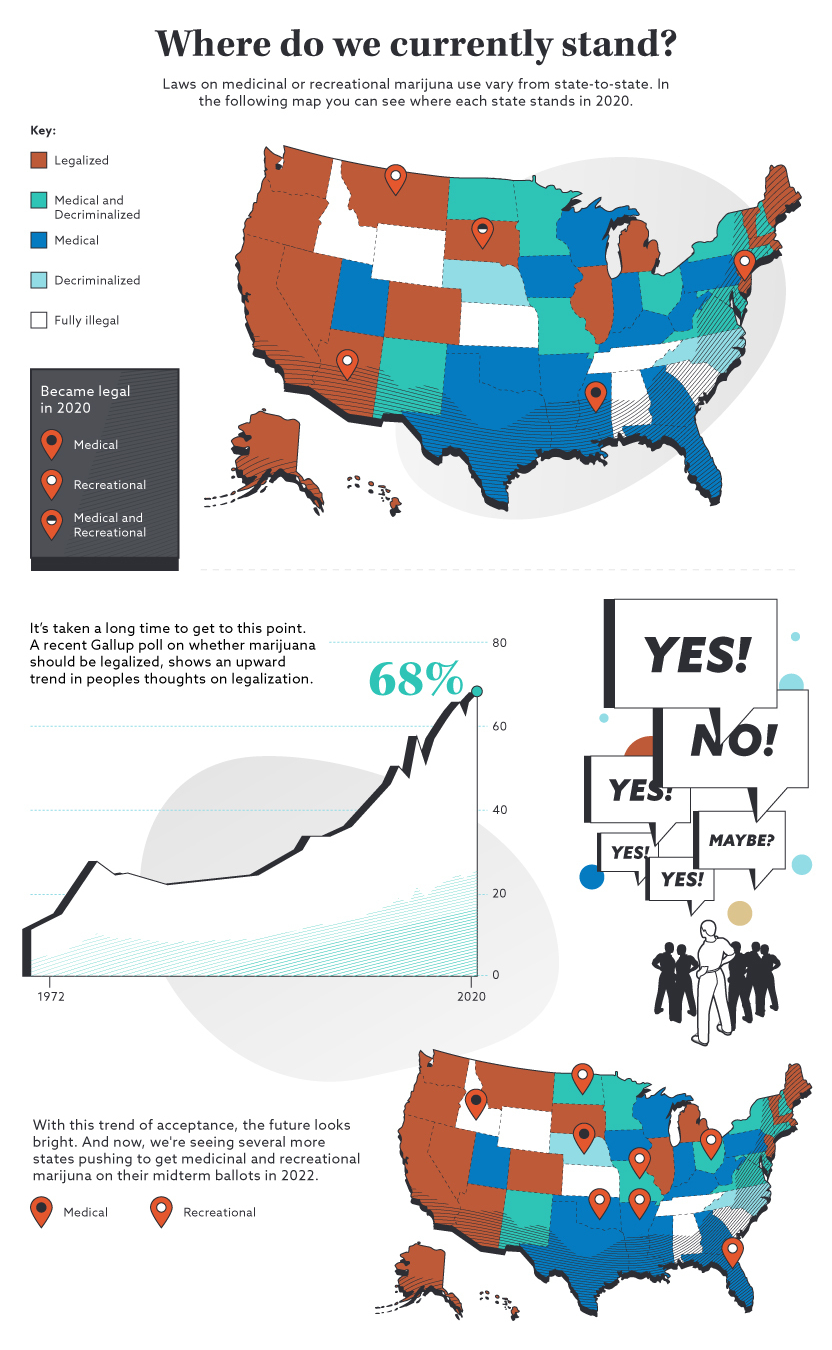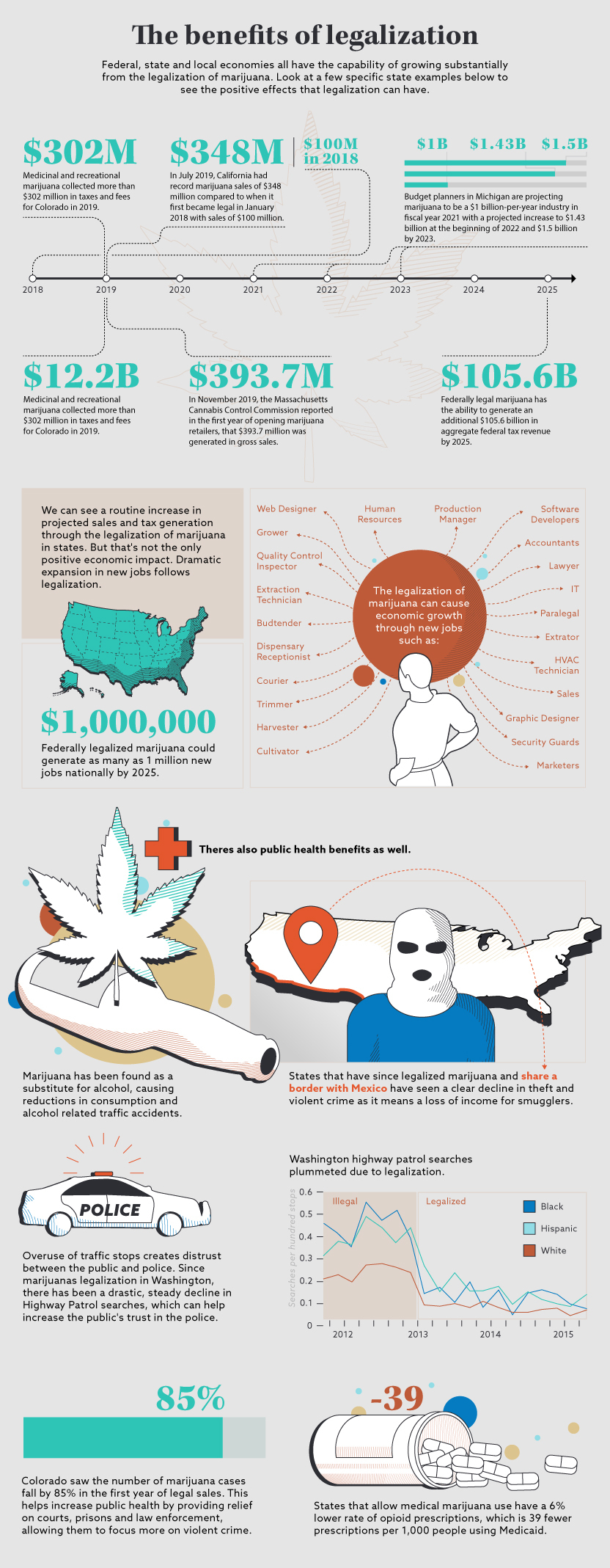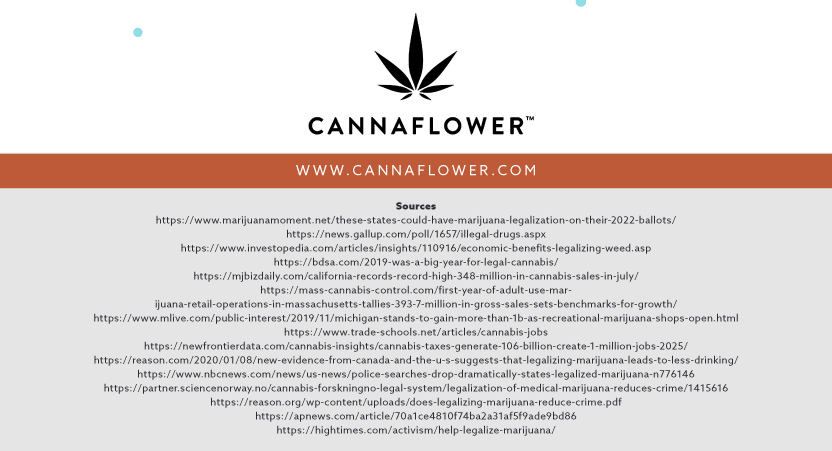The United States and the Use of Marijuana: Where Do Things Stand Now?

Where does the U.S. currently stand on making marijuana legal? Eighteen states and Washington D.C. permit recreational use of cannabis, along with medical marijuana. The latest three states to make it onto the list are New Mexico, Connecticut, and Virginia. Another 18 states have permitted the use of medical marijuana.
Cannabis as a legal element, either for recreational or medical use, has gained strong footing in a significant part of the United States. Among the other states, in some marijuana has been decriminalized – meaning that while it is still illegal to manufacture and distribute and sell; punishments for possession and use have been reduced to civil penalties like a citation or fine – while in others the stiff criminal penalties remain
The Road Travelled So Far
The journey to making marijuana legal has not been a smooth one. People’s opinion on whether marijuana should be considered a legal substance has changed slowly over time. In the early 1970s the percentage of Americans who believed that marijuana should be legalized was less than 20%. Today nearly 70% of the population favors making marijuana legal, and hemp products like CBD flower can be legally purchased in most states.
The Road Ahead of Us
The 2022 midterm ballots would see many other states pushing for the legalization of marijuana, both medicinal and recreational.
The real goal is federal legalization, which would remove legal roadblocks like banking restrictions. With cannabis legal at the federal level, it is estimated that the cannabis market in the United States, which was worth $51 billion in 2018, would grow to $80 billion in 2025 and $100 billion in 2030.
In 2020 alone, the nationwide sales of cannabis increased 67%. Along with the market size, salaries of senior-level employees in the cannabis industry also grew, indicating higher profits. Overall, 12% of Americans are active marijuana users at present.
The Merits of Legalization

Much of the growth in this industry stems from increasing legalization. For instance, in July 2019, California witnessed record marijuana sales of $348 million. In January 2018, when it first became legal in the state, the sales were less than a third of that at $100 million.
States like Colorado experienced increased collection of taxes and fees, which has the ability to create $105.6 billion in aggregate federal tax revenue by 2025. Federally legal marijuana also exhibits the potential to create 1 million new jobs nationally by 2025.
These new jobs would span all stages of the cannabis supply chain, including cultivators, extraction technicians, quality control executives, production managers, designers, accountants, security guards, marketers, and many more.
To support the legalization of marijuana, you can vote for pro-cannabis legislators and become an online advocate by making donations or raising relevant petitions to get your voice heard. You can also educate yourself on the cannabis industry’s history and its benefits so you can educate more people. There are numerous other public health benefits and socio-cultural upsides to marijuana legalization, which you can see in the infographic below.
Sources

